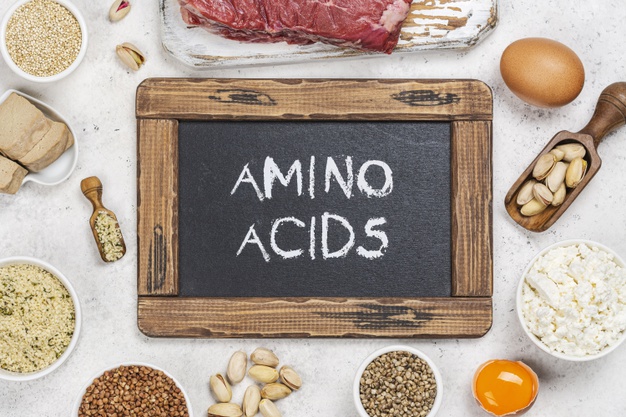Vitamin A is a fat soluble vitamin, naturally found in many foods. It plays various important roles in body and most significantly promotes vision, reproductive health and immune system.
Chemistry
- Basically the term Vitamin A is collectively used for representing various biologically active and structurally relative molecules
- The natural and synthetic forms of Vitamin A is generally known as retinoids
- Retinol, retinal and retinoic acid are known as the vitamers of Vitamin A
- Retinol is a primary alcohol that contains a beta-ionone ring in its structure
- Retinal is an aldehyde generally derived by the oxidation of retinol and retinoic acid is obtained by the oxidation of retinal

Carotenoids
- Carotenoids are the provitamins of Vitamin A
- Carotinoids are basically of three types like alpha carotene, beta carotene and beta cryptoxanthin, among these beta carotene is considered as the most important carotinoid
- Carotenoids are converted into Vitamin A in body
Absorption, transport as well as mobilization of Vitamin A
- Dietary retinyl esters are hydrolyzed with the help of the enzyme hydrolase in intestine and subsequently releases retinol as well as free fatty acids
- Carotenes are also hydrolyzed in intestine and release retinal, which is then converted into retinol
- Retinol is then reesterified into long chain fatty acids and incorporated into chylomicrons and then transported into the lymph, which is then taken up by liver and stored there
- As per the need of the body Vitamin A is released from the liver as free retinol and then it is transported in circulation by binding with a protein named retinol binding protein (RBP)
- This retinol-RBP complex then binds to the specific receptor present in cell membrane and enters into the cell through it and performs its functions

Sources
Vitamin A is widely present in both plant and animal sources. Foods, which are rich in Vitamin A are listed below –
- Egg especially egg yolk
- Beef liver
- Oily fish
- Fish liver oil
- Cheese
- Yogurt
- Milk
- Carrot
- Spinach
- Sweet potatoes
- Pumpkin
- Mangos
- Apricot
- Black eyed peas
- Tomato juice
- Broccoli
- Pistachio nuts
- Butter
Supplements
- Apart from dietary source Vitamin A is also available in the form of supplements
- It is also available in the form of retinyl palmitate or retinyl acetate
- It has seen that Vitamin A is present in some supplements as beta-carotene and some supplements also contain preformed Vitamin A
- Though one can consume Vitamin A through supplements but it is always better to consume Vitamin A from natural sources

Health benefits
Role on eye
- Vitamin A plays significant role in promoting eye health and vision
- It helps to improve the health of conjunctiva as well as cornea and protects them from oxidative damages
- We know that retina of an eye contains two type of cells called rod cell and cone cell. Rod cells are generally located at the periphery of the retina whereas cone cells are located at the centre
- Cone cells help in colour vision and bright light vision but rod cells are involved in dim light vision
- Rod cells contain a pigment named rhodopsin, which helps in dim light vision and Vitamin A helps in the synthesis of rhodopsin thus deficiency of Vitamin A decreases the production of rhodopsin and impaired dim light vision. Thus individual with Vitamin A deficiency cannot view properly in dim light or night and this condition is known as night blindness. Consumption of Vitamin A rich diet is considered as one of the most significant options for preventing night blindness
Anti-carcinogenic activity

- It has seen that consumption of Vitamin A especially in the form of beta carotene significantly decreases the prevalence of certain type of cancers
- Its antioxidant activity is responsible for reducing oxidative stress in body, which ultimately decreases the risk of cancers
- It is also associated with hindering the growth of malignant cells
- It is very effective for decreasing the prevalence of cervical cancer, bladder cancer and lung cancer

Role on reproductive system
- It plays imperative role in maintaining a healthy reproductive system for both genders
- It also helps in the normal growth and development of embryo during gestational period
- It also helps to improve the quality of sperm
- It helps to promote spermatogenesis too and also plays vital role in maintaining the male genital tract
- It has seen that deficiency of Vitamin A among women is responsible for reducing the quality of egg and it also affects the implantation process very adversely thus it is better to consume Vitamin A rich foods for preventing the risk of infertility
Role on immunity
- Vitamin A is closely related with maintaining the natural defense mechanism of body
- It helps to promote the functionality of mucous barriers present in lungs, eyes, genitals and gut, which help to trap infectious agent as well as diseases causing bacteria and inhibit them from reaching the sites of infections thus decreases the susceptibility of developing infectious diseases
- It also helps to enhance the production as well as the activity of WBC

Role on skeletal system
- Though Vitamin D, calcium and phosphorus are considered as the principal nutrients for bone development but Vitamin A also plays vital role in maintaining healthy bones
- Vitamin A is also responsible for influencing the growth and activity of osteoblast (these are known as bone building cells) and osteoclasts (these cells are known as bone breaking down cells)
- It has seen that individuals who have Vitamin A deficiency are more susceptible to develop bone disorders especially bone fractures
Role on skin
- Consumption of Vitamin A is very effective for preventing acne
- Its antioxidant activity is also related with delaying the ageing process
- Individual with dry skin can consume Vitamin A for improving their skin health and texture
Other health benefits
- Retinol and retinoic acid act like steroid hormones and help in protein synthesis thus play significant role in cellular growth and differentiation
- Retinol and retinoic acid are also responsible for synthesizing transferrin, a protein responsible for iron transport
- It helps in maintaining the health of epithelial tissues as well
RDA
 Infants of 0 to 6 months age should consume 400mcg of Vitamin A daily for fulfilling its requirements whereas infants of 7 to 12 months should consume 500mcg of Vitamin A per day
Infants of 0 to 6 months age should consume 400mcg of Vitamin A daily for fulfilling its requirements whereas infants of 7 to 12 months should consume 500mcg of Vitamin A per day- RDA of Vitamin A for children of 1 to 3 years is 300mcg per day, daily 400mcg Vitamin A is required for 4 to 8 years children and daily 600mcg of Vitamin A is required for 9 to 13 years children
- Adolescent boys and girls should consume 900mcg of Vitamin A per day
- Adults should also consume 900mcg of Vitamin A per day but it is better to consume additional Vitamin A during pregnancy and lactation for fulfilling the increased demand of the body
Disease states
Consumption of Vitamin A lower than the RDA or higher than the RDA is not wise as it may develop its deficiency disorders or hyperactivity. Below points will discuss about the diseases states of Vitamin A –
Deficiency disorders
- Corneal xerosis
- Xerophthalmia
- Keratomalacia
- Bitot's Spot
- Macular Degeneration
- Growth retardation
- Infertility
- Damage of skin and epithelial tissues
Hyper activity
- Dermatitis
- Tenderness of bones
- Enlargement of liver
- Weight reduction
- Skeletal decalcification
- Joint pain
- Alopecia

Source:
Chakraborty, U. and Chandra, A., 2021. Bitot's spots, dry eyes, and night blindness indicate vitamin A deficiency. The Lancet, 397(10270), p.e2.
Clagett-Dame, M. and Knutson, D., 2011. Vitamin A in reproduction and development. Nutrients, 3(4), pp.385-428.
Debelo, H., Novotny, J.A. and Ferruzzi, M.G., 2017. Vitamin A. Advances in Nutrition, 8(6), pp.992-994.
Huang, Z., Liu, Y., Qi, G., Brand, D. and Zheng, S.G., 2018. Role of vitamin A in the immune system. Journal of clinical medicine, 7(9), p.258.
Meléndez‐Martínez, A.J., 2019. An Overview of Carotenoids, Apocarotenoids, and Vitamin A in Agro‐Food, Nutrition, Health, and Disease. Molecular nutrition & food research, 63(15), p.1801045.
Olson, J.M., Ameer, M.A. and Goyal, A., 2021. Vitamin A toxicity. StatPearls [Internet].









